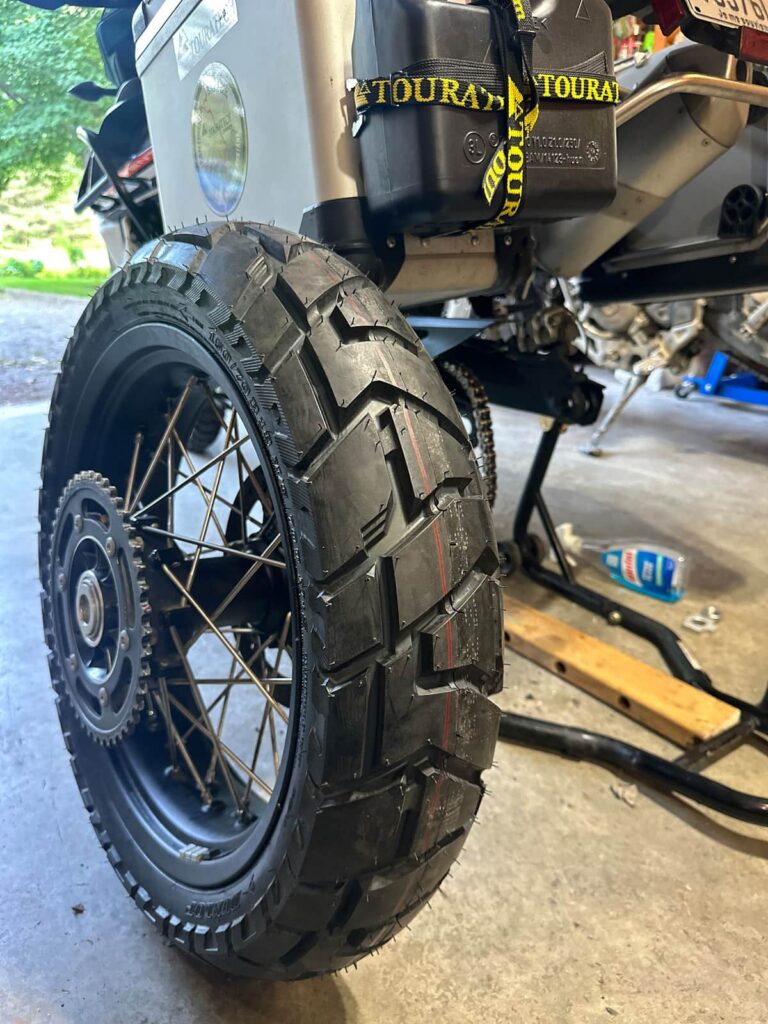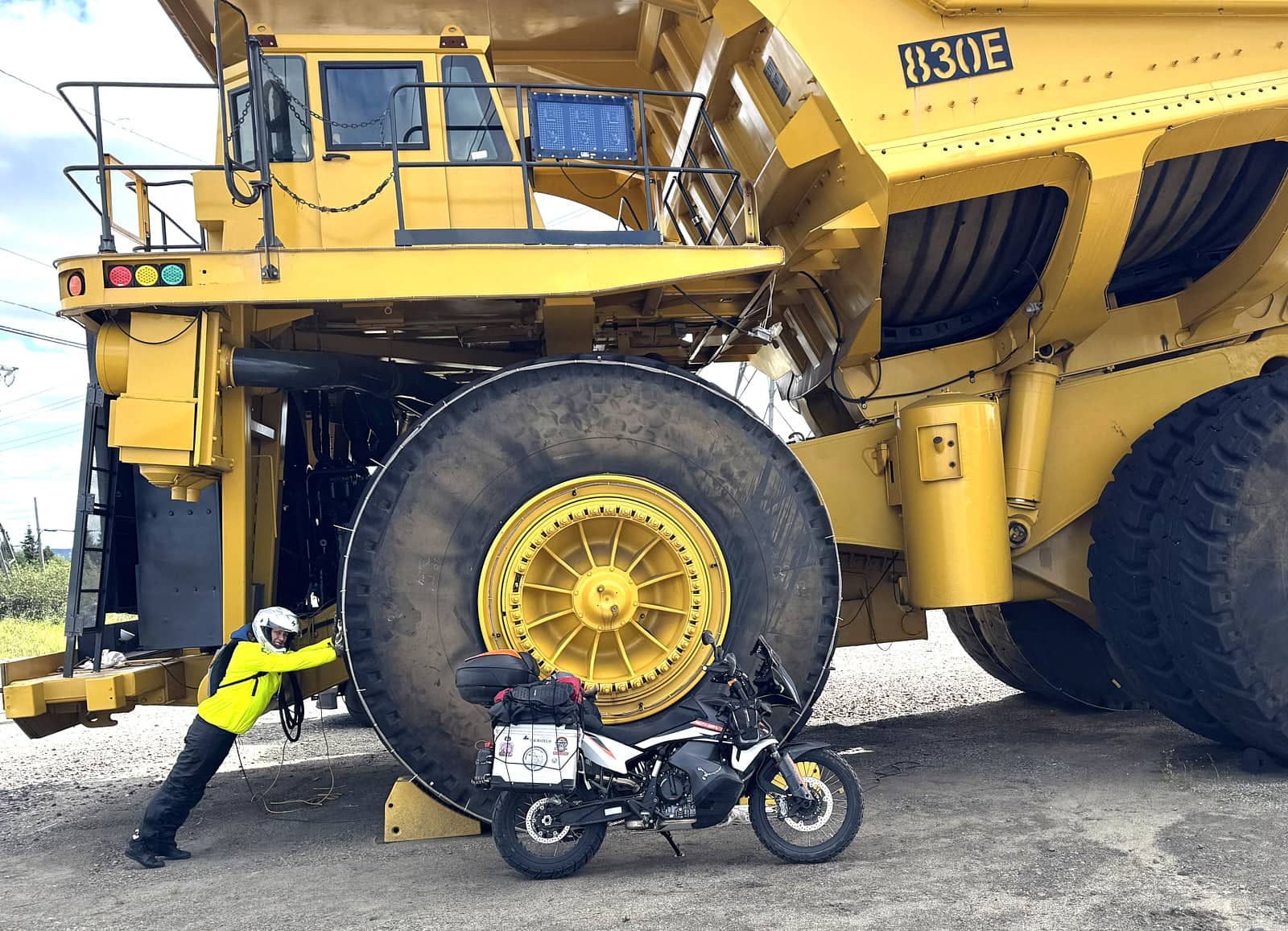Table of contents
Toggle- Mounting and dismounting: the rigidity of the Trailmax Mission tire
- On-road performance: Trailmax Mission stability and longevity
- Load capacity and long-distance endurance
- Wear and Longevity: A Tire Built to Last
- On gravel: toughness and confidence
- Muddy trails and wet terrain: where the Dunlop Trailmax Mission reaches its limits
- Verdict: a solid, dependable adventure tire
- Who is the Dunlop Trailmax Mission for?
- Poursuivez votre lecture
The Dunlop Trailmax Mission has made quite a name for itself since its arrival on the market. It’s marketed as a tire that can take you far—on pavement and on trails alike. But does it really deliver? While it stands out for its versatility and solid on-road performance, it’s important to remember that it’s not a 100% off-road tire: its limits become clear when conditions get truly extreme.
In this review, I’ll break down this tire point by point:
- Mounting and dismounting: practicality during installation.
- On paved roads: feel, grip, whether on highways or twisty roads.
- On gravel: stability and behaviour on rocky terrain.
- Off-road: how the Trailmax Mission reacts in mud and wet terrain.
- Overall impression: our feedback after testing.
- Who is this tire for?
Mounting and dismounting: the rigidity of the Trailmax Mission tire
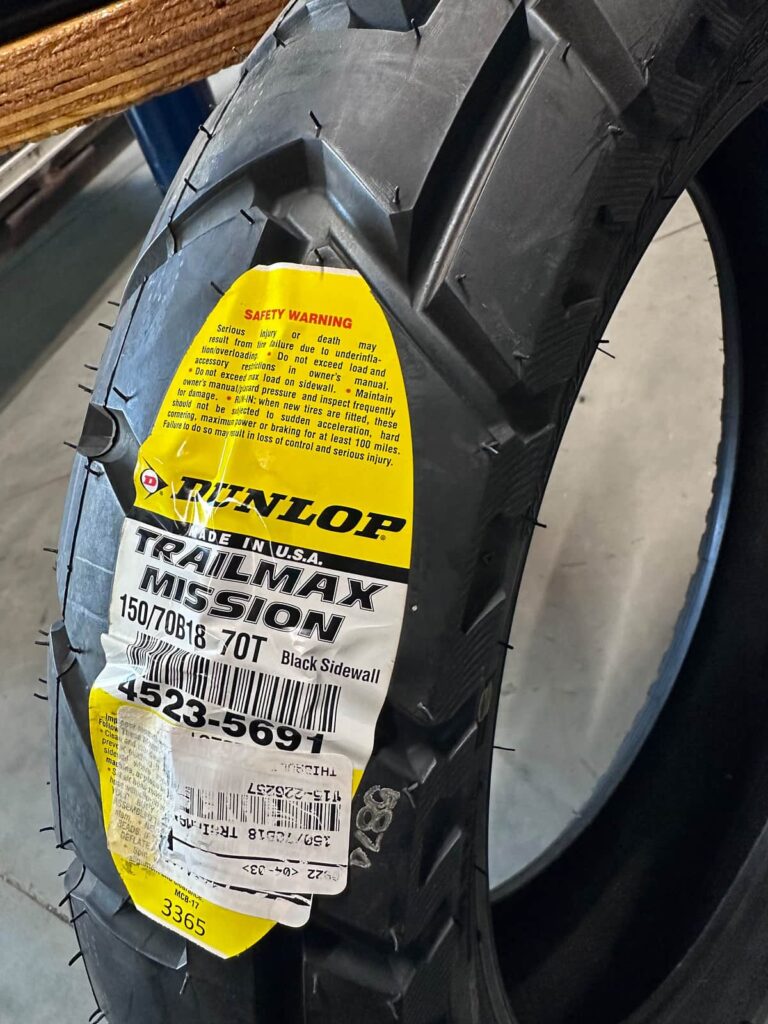
Before even riding, the Dunlop Trailmax Mission commands respect—right at the installation stage. Using only basic tools and no special assistance, this tire turned out to be by far the hardest one I’ve ever mounted. The reason? The tire’s extremely stiff carcass, which turns what’s usually a simple 5- to 10-minute task into a full hour-long battle.
Working alone, you’ll need plenty of leverage tools and tire spoons, and above all, patience to finally seat it on the rear rim. In short, this isn’t a tire you mount casually.
But that’s not all. Weighing 21.2 lb for a 150/70B18 size, the Trailmax Mission clearly falls into the heavy-tire category.
And when it comes time to inflate it, the fight isn’t over. On a tubeless rim, the Trailmax Mission is particularly difficult to seat: its stiff carcass makes bead seating hard. In this case, a small, portable compressor often isn’t enough—you’ll want a high-capacity air compressor able to blast enough air quickly to lock the bead in place.
This combination of stiffness and weight makes the Trailmax Mission a formidable opponent right from the start. While this rigidity likely ensures increased durability and strength, it can quickly become a nightmare for riders far from civilization. Imagine being deep in the backcountry, forced to remove this tire to replace a tube: the task would be a serious challenge. Note: the tire tested was a tubeless model.
On-road performance: Trailmax Mission stability and longevity

It’s on pavement that the Dunlop Trailmax Mission impressed me the most. From the first few kilometres, its round profile is immediately noticeable. Unlike flatter-profile tires that transition abruptly to the edge, the Dunlop Trailmax Mission offers very progressive lean characteristics. There’s plenty of range between upright and leaned-over positions, resulting in excellent corner feedback and enhanced safety.
The rounded profile allows for smooth, natural transitions, and stability while leaning is remarkable. There’s no wobble or vagueness like you get from aggressive knobby tires. The Trailmax Mission, with its 60% road/40% off-road design, prioritizes asphalt grip. The result: forgiving handling, consistent stability at any speed, and confidence even with spirited riding.
Load capacity and long-distance endurance
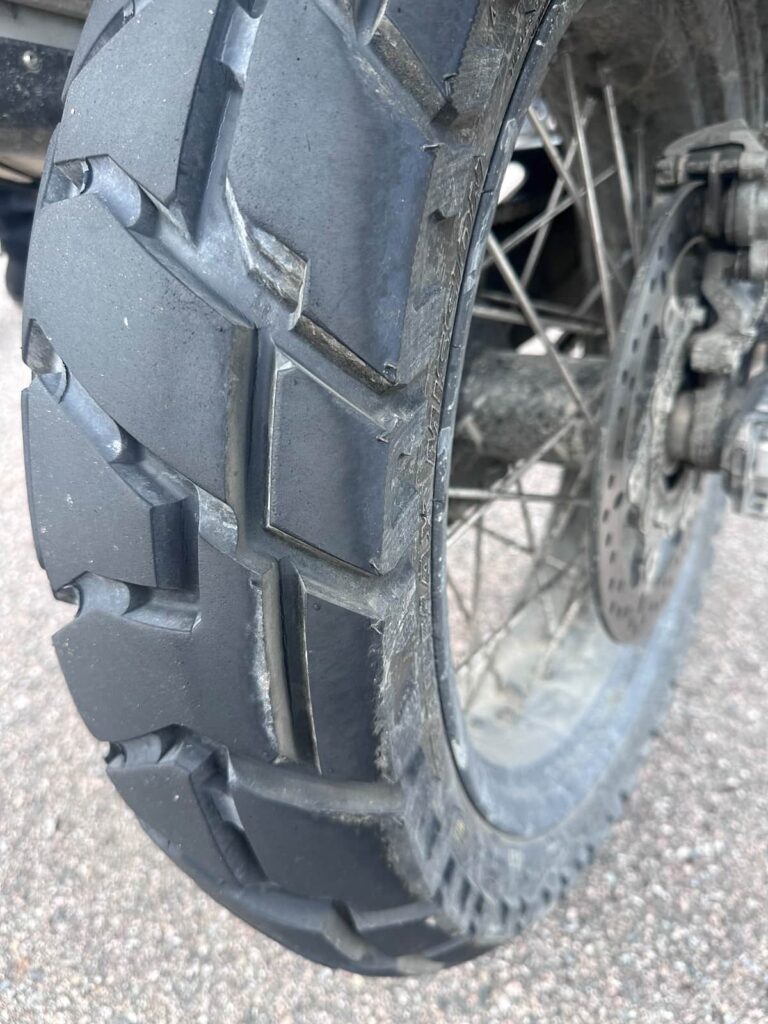
I have an anecdote that perfectly illustrates the Trailmax Mission’s load capacity. We started out with the tire inflated to 35 psi (recommended pressure) in my garage at 15 °C (59 °F). By departure time, it was 30 °C (86 °F) outside. Two riders, plus full camping and survival gear for two weeks—the bike was extremely loaded.
After several kilometres on the highway, the tire was hot to the touch. A pressure check showed 48 psi, caused by heat buildup and overload. I adjusted accordingly, and from then on, it stayed steady between 32 psi and 35 psi for the rest of the trip. The Trailmax Mission never showed any weakness. No deformation, no puncture, despite the considerable weight it carried.
Wear and Longevity: A Tire Built to Last
Wear accelerates slightly under such extreme loads compared with solo riding, but nothing serious—the tread blocks are deep, at 10 mm (13/32 in). That generous depth ensures an impressive lifespan.
In summary, the Dunlop Trailmax Mission excels on pavement. It’s stable, forgiving, and can handle heavy loads while behaving like a road-focused tire.
On gravel: toughness and confidence
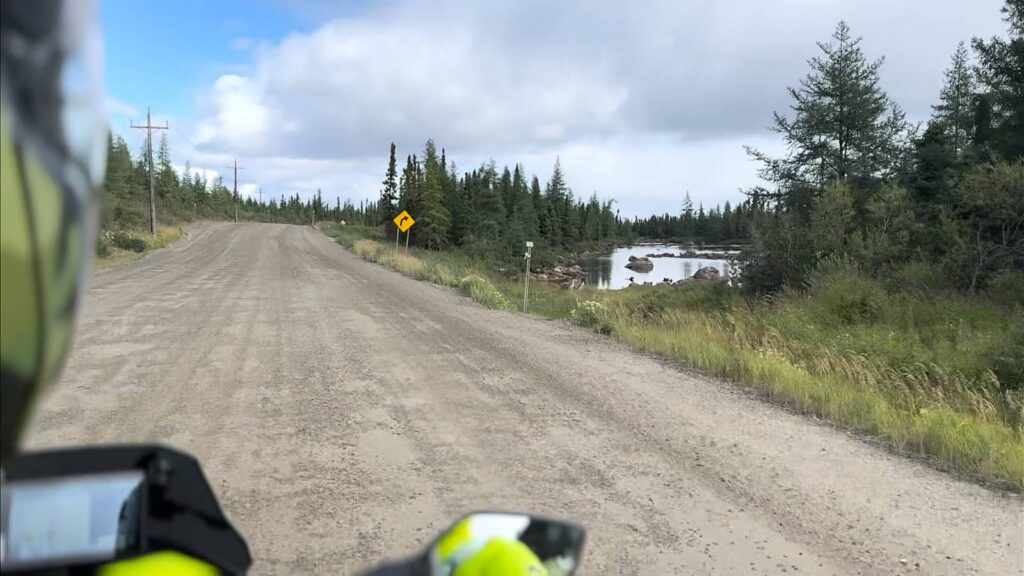
Next up, gravel roads—often where a dual-purpose tire’s real limits appear. Yet again, the Dunlop Trailmax Mission inspired confidence.
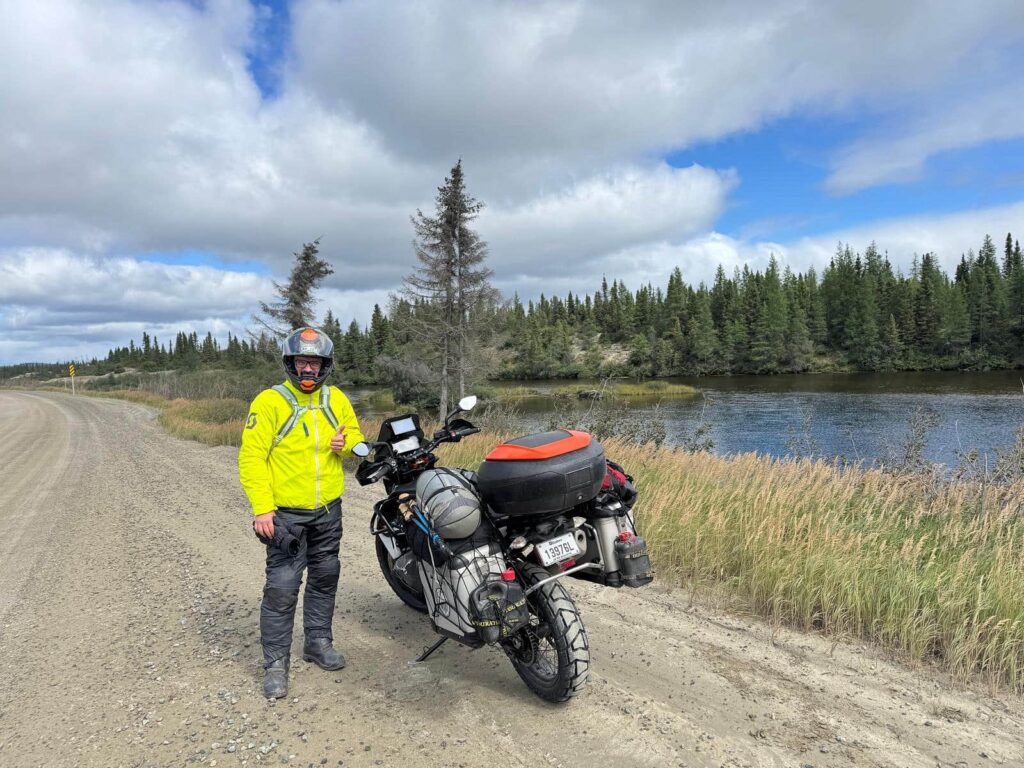
Some stretches were littered with large rocks. With a fully loaded bike, two passengers, and two weeks of camping gear, punctures seemed likely. Yet nothing happened: the tire absorbed impacts impressively. Its robust carcass proved to be a major asset for impact resistance and rim protection.
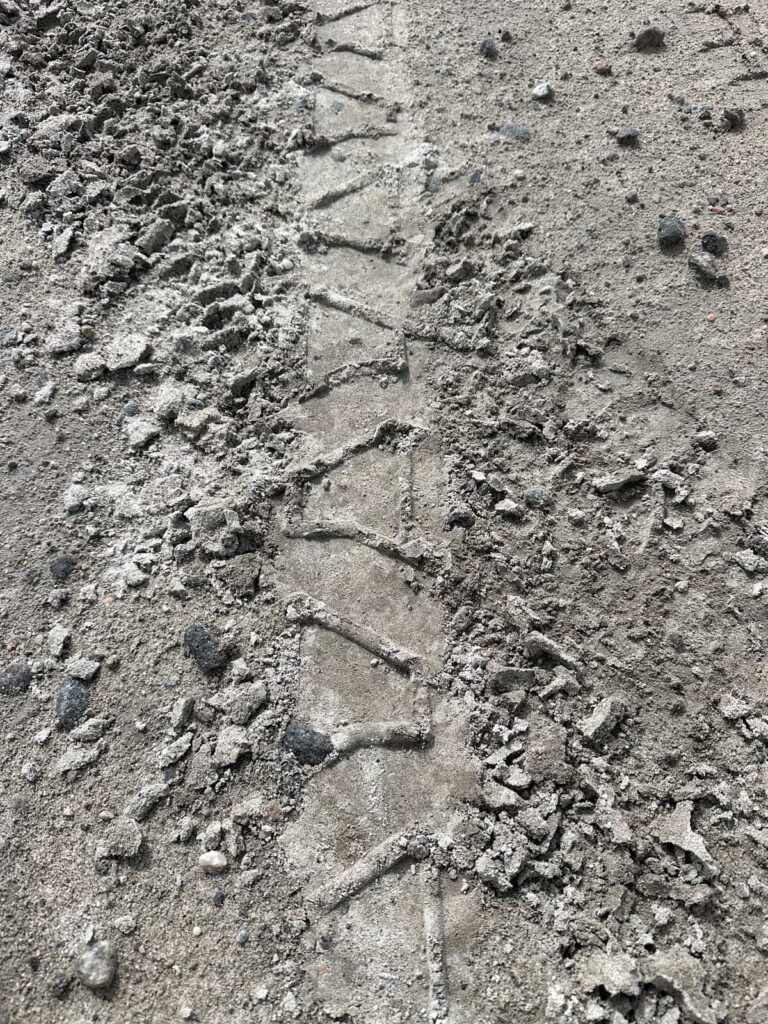
Of course, the riding wasn’t aggressive—with that load and a passenger, there was no point in sliding or drifting. But for realistic, cautious riding, the Trailmax Mission showed good traction and reassuring stability. In short, on gravel, the Trailmax Mission confirms its strengths: solid, durable, and unfazed by hits, allowing relaxed riding even under heavy load.
Muddy trails and wet terrain: where the Dunlop Trailmax Mission reaches its limits

Where the Dunlop Trailmax Mission reveals its true nature is in mud or wet terrain. These tests were deliberately limited—two-up, heavily loaded, we couldn’t push things—but the result is clear: once the ground gets slick, traction drops fast.
Its road-style tread pattern, compared to a full knobby tire, tends to pack up with mud quickly. Once filled, the grooves can’t clear, and the tire loses almost all traction. The result: wheelspin and poor progress, reminding you this model is primarily built for road and mixed use, not extreme off-road.
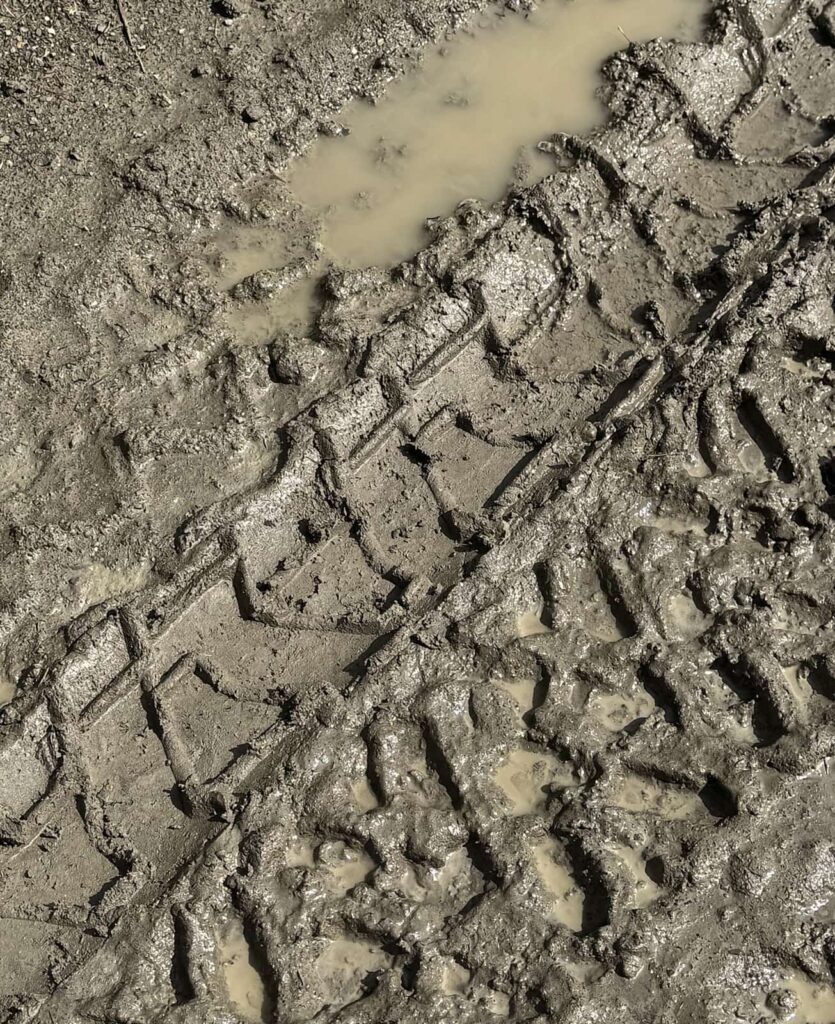
However, on dry, rocky trails, the Trailmax Mission performs well. Its stiff, strong carcass absorbs impacts even when overloaded, easily handling stone-strewn sections. This is one of its key strengths: despite weight and repeated hits, the tire demonstrates remarkable toughness.
In summary: beware of water and mud. The Trailmax Mission lacks traction in those conditions but remains a reliable partner on dry, rocky ground.

Verdict: a solid, dependable adventure tire
The Dunlop Trailmax Mission stands out for its toughness and durability. It can handle long distances, heavy loads, and rocky trails without complaint. On pavement, it provides a round, stable, confidence-inspiring profile ideal for curves and long rides. On gravel, it’s steady and predictable. Its limits appear in mud and wet terrain, where traction fades quickly. This versatile, rugged, long-lasting tire requires caution if used for extreme off-road.

Who is the Dunlop Trailmax Mission for?
The Dunlop Trailmax Mission will best suit riders who spend most of their time on the road but still want the freedom to venture onto gravel or dry trails. It’s ideal for travellers on long two-up trips with luggage who prioritize stability, strength, and longevity. However, those who often ride in extreme terrain—mud or very technical sections—should consider a more off-road-oriented tire.
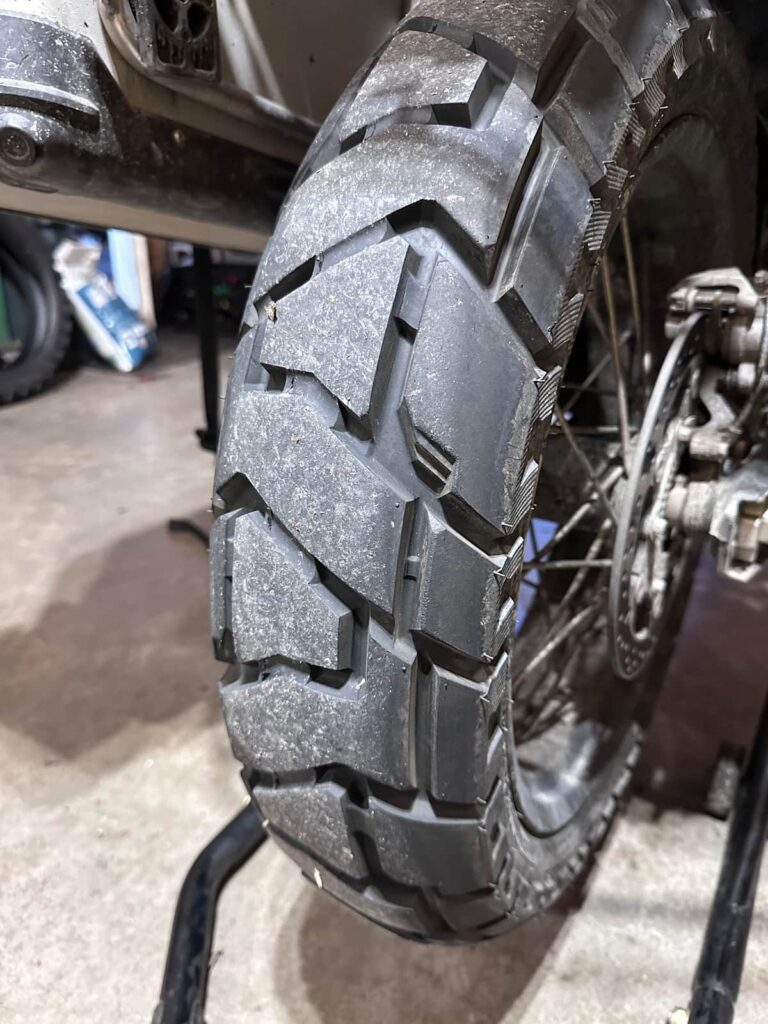
Strengths
- Rigid carcass able to handle heavy loads.
- Nice rounded profile with tread well suited for both pavement and dirt.
- Stable when leaned.
- Excellent longevity—can handle plenty of mileage.
Points to watch
- Due to the stiff carcass, mounting or repairing this tire on the trail can be challenging.
- Extremely heavy tire—possible power loss and fuel economy impact.
- In wet conditions, it clogs easily, reducing traction.
